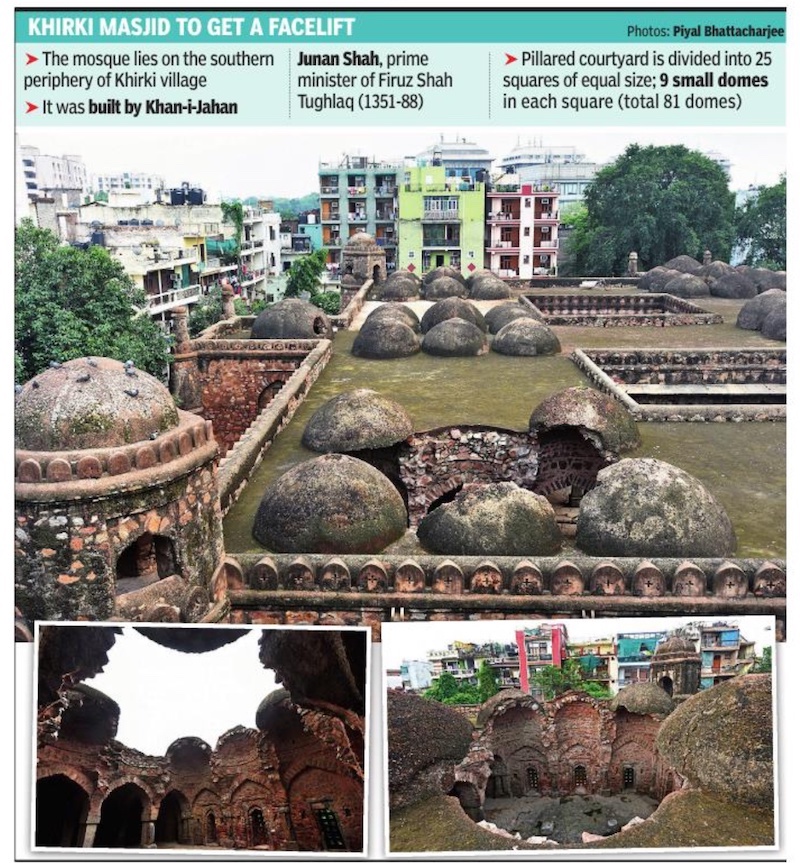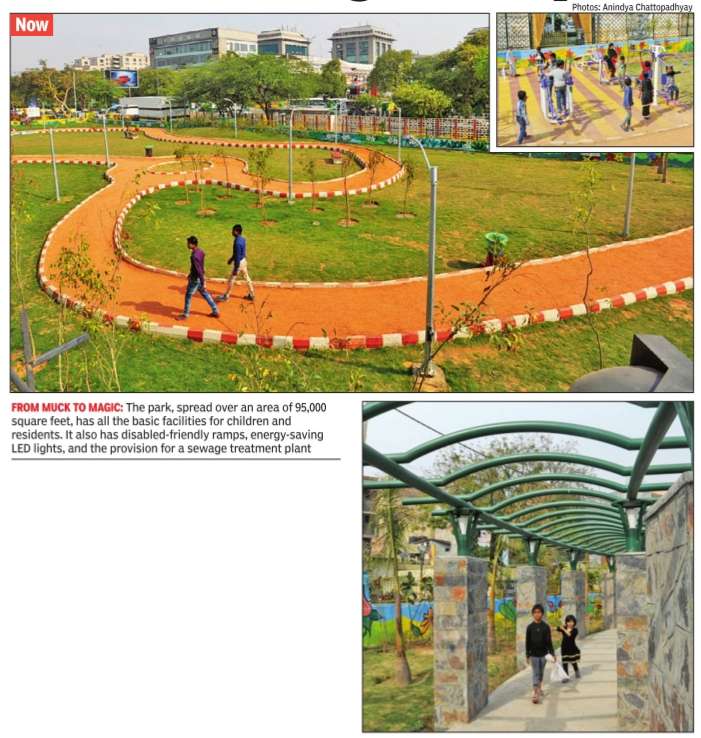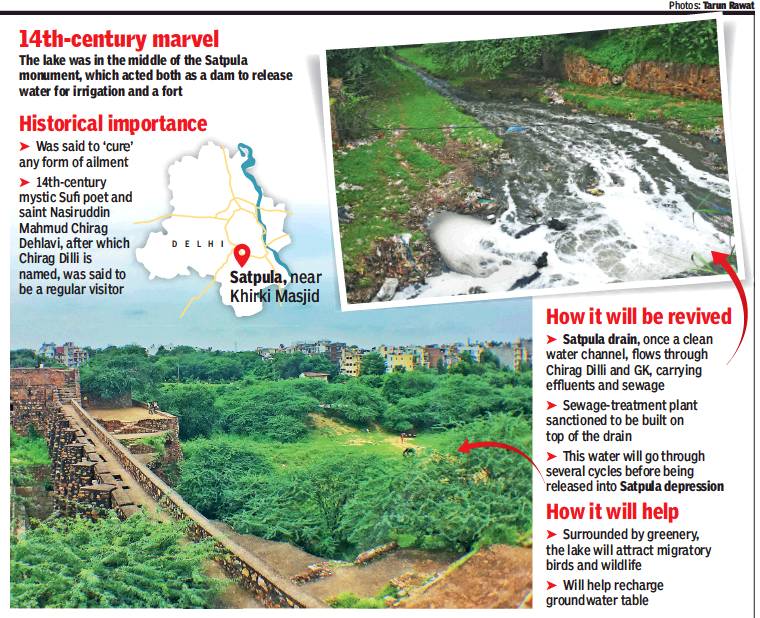Delhi: Khirki
Contents |
Delhi:Khirki in 1902
This article was written between 1902 when conditions were Readers will be able to edit existing articles and post new articles |
Extracted from:
Delhi: Past And Present
By H. C. Fanshawe, C.S.I.
Bengal Civil Service, Retired;
Late Chief Secretary To The Punjab Government,
And Commissioner Of The Delhi Division
John Murray, London. I9o2.
NOTE: While reading please keep in mind that all articles in this series have been scanned from a book. Therefore, footnotes have got inserted into the main text of the article, interrupting the flow. Readers who spot these footnotes gone astray might like to shift them to the correct place.
Secondly, kindly ignore all references to page numbers, because they refer to the physical, printed book.
The mosque of Khirki is the most interesting of all the old Pathan mosques, and like that
of Gulbargah, not far removed from it in date, and the much earlier one of Cordova built in
the last quarter of the ninth century, is a covered mosque, which is a rare arrangement, broken
in this instance by four open quadrangles in the middle of the arcades.
It was built by Jahan Khan in 1380, much about the same time as the Kalan and Begampur mosques and some years subsequently to that of Nizam-ud-din which it resembles most.
The exterior measurement of the mosque give a dimension of 192 feet each way. (The Gulbargah mosque is 216 by 176 feet). The sides of the quadrangles arc thirty-two feet square, and have three arches: each quadrangle is surrounded by pillared spaces of the same area as itself, and the total number of arches from front to back and from side to side being fifteen.
The plain square columns which carry them are fourfold at the corners of the courts, and twofold round the courts; the columns of the arcades in line with the former are double, and with the latter single, and the effect of the play of light and shade looking down the vistas of them and across the courts is very picturesque. A separate recess projects in the centre of the west wall, forming a mihrab. After 1857 the mosque was cleared of the villagers who had settled in it.
Khirki Masjid, 2023
Anuja Jaiswal, June 29, 2023: The Times of India

From: Anuja Jaiswal, June 29, 2023: The Times of India
New Delhi: The Archaeological Survey of India (ASI) is set to begin restoration work on nine majestic domes located on the northeast corner of the grand 14th-century Khirki Masjid. The domes, part of a square formation on the roof, had likely collapsed decades ago. The work is also expected to strengthen the structure of the mosque.
The mosque, which lies on the southern periphery of Khirki village in south Delhi, has been in a state of neglect for a long time, resulting in the collapse of a few domes and some parts left in a dilapidated condition. The structure is believed to be one of the seven mosques built by Khan-i-Jahan Junan Shah, prime minister of Firuz Shah Tughluq, ruler of Delhi from 1351 to 1388.
Superintending archaeologist (Delhi circle) Praveen Singh told TOI the restoration work will possibly start next month and take at least three-four months to complete. “Nine domes located at the extreme end of the right side of the mosque will be reconstructed,” he said, adding that the estimated cost of the project is about Rs 40 lakh.
The roof is divided into 25 squares of equal size. Nine of these squares are formations of nine small domes – a total 81 domes on the rooftop. These squares are alternated by 12 flat roofs. The remaining four squares are left uncovered to provide light and ventilation.
This ingenious way of covering the roof is repeated only in one other mosque — Kalan Masjid, which lies on the eastern periphery of the village of Nizamuddin — erected by the same builder.
Senior conservation assistant (Hauz Khas) Deepak Panwar said that dry bricks will be used to form dome-shaped framework, which will be covered with a four-inch layer of mixture of wet mud/clay and dry jute to provide cushioning between the brick masonry and the rubble stone masonry for a better finish. The framework will be removed after a month and the final structure will be ready.
“The masonry work will be done with lime mortar, consisting of lime, surkhi (brick powder) and sand mixed with natural adhesives like jaggery, belgiri and gum, so that the structure is strengthened,” he said.
According to ASI officials, the double-storey mosque was built with thickly-plastered rubble stone, with the lower storey consisting only of a series of basement cells. Battered bastions occupy its four corners, making it look like a fortified building.
Lal Gumbaz
1902
Two hundred yards north of the Khirki mosque is an extremely pretty sandstone pavilion, with pierced screens over the grave of Yusaf Katál, and half a mile north of this, and 500 yards east of the Begampur mosque, is a handsome tomb of red sandstone, sloping walls raised on a high base and surmounted by a white marble dome, very similar in general appearance to that of Tughlak Shah.
This, which is known as the Lal Gumbaz, is the grave of Kabir-ud-din Aulia, son of Yusaf Katal, and grandson of Shekh Farid-ud-din Shakarganj of Pakpattan. The tomb was built by Sultan Muhammad Tughlakj and is considerably smaller than that of his father—the internal measurements being twenty-nine feet, and the external forty-five, as compared with thirty-eight and sixty-one feet.
The interior of the dome is of red sandstone, and from the centre hang nine chains for lamps over the graves on the floor; at the head of that of the Aulia, is an elaborate lamp pillar. The pierced red sandstone grilles in the north and south walls of the tomb are very fine. East of the village of Khirki in the line of the defences of Jahan Panah is a fine work of masonry forming a sluice for the stream which enters here, known as the Sat Palah, or Seven Arches, built by Muhammad Tughlak Shah, in 1336 A.D.
Chiragh Delhi
Half a mile to the north of this is the shrine of Nasr-ud-din Muhammad, known as Chiragh Delhi (the Lamp of Delhi), the disciple of Nizam-ud-din Aulia, and last saint of renown at Delhi, who died in 1356 A.D.
The walls which enclose the shrine and village, and a huge untenanted area were built by the Emperor Muhammad Shah in 1729, and rise finely above the banks of the depression, which has worn under them a deep bed, once spanned by a bridge, as also by another lower down its course.
A picturesque gate in the west wall leads to the shrine between the tomb of Bahlol Lodi and a mosque. The Dargah is entered from the east by a gate built by Firoz Shah in 1373 A.D. The tomb chamber is surmounted by a dome of red sandstone surrounded by a broad dripstone : it has been much modernised at various times. A gold cup hangs over the grave, as in the Khizri mosque at Nizam-ud-din. In the north-west corner of the enclosure is a fine Assembly Hall.
The tomb of Sultan Bahlol Lodi (died 1488 A.D.) is occupied by the attendants of the Dargah, so that only its exterior can be seen. It is of unusual shape for a tomb, having five domes over it; the details of the sandstone decoration are all Hindu. To the front of it on the south side is a grave enclosure surrounded by a very beautiful pierced screen of red sandstone, which contrasts happily with the green shade above it.
Jamun wala park
Jasjeev Gandhiok, Garbage gone, Khirki gets a park, March 17, 2017: The Times of India

LG visit rids area of eyesore, leads to revival of `Jamun Wala Park' In Two Months
It was an eyesore that stood in stark contrast to the glitzy malls across the road. It underlined the yawning gap between the two worlds, a huge dumping ground with mounds of garbage, giving out an unbearable stink.The urban village of Khirki Extension, on Press Enclave Marg, provided the backdrop to this picture of apathy. However, all of a sudden on a Sunday in January, LG Anil Baijal -barely 10 days into his job -arrived in the area for a cleanliness drive. Bulldozers were seen at work on this strip. Two months later, a park with walking tracks, installations, graffiti and outdoor gym has come up here for the residents.
It has a name -`Jamun wala park', in memory of one that used to exist earlier.The initiative has been jointly undertaken by South Delhi Municipal Corporation and Select Citywalk. The task was carried out in just over eight weeks. The park, spread over an area of 95,000 square feet, has all the basic facilities for children and residents.
It has a provision for a sewage treatment plant for horticulture and landscaping, disabled-friendly ramps and energy-saving LED lights too. According to officials, toilets, CCTV cameras and a badminton court will soon be added. To improve aesthetics, Delhi Street Art group was roped in. They have painted the walls with graffiti and educational messages like “Saving green spaces“. In future, installations from Khoj Studios -which is locate in the area -will be brought in with the park being used as a place to hold art exhibitions.
African population
2017: highly reduced
Krittika Sharma, At Khirki, window of hope too small for them, Mar 30, 2017: The Times of India
Racist incidents have almost cleared Khirki Extension, once known for its mixed African population, of black tenants, and even the few African students living there tend to live close in close proximity in a few overpriced apartments along a narrow lane. The area is now dominated by nationals of places such as Afghanistan and Eastern Europe, but the animosity towards the Africans that pushed them to find accommodations in other parts of Delhi is still palpable in the pejorative the locals use for the blacks: “Habshi“, originally a perfectly legitimate demonym for Abyssinians.
The few students who have managed to survive the constant stares and suspicion have devised their own ways to assert their right to move freely . “I am a nurse by day and a student in the evenings. I wear my nursing uniform through the day because that is the only way to stop people thinking that I am a prostitute,“ said 26-year-old Grace (name changed).
Despite having lived in Khirki for a year and a half now, Grace still flinches at her early memories. “I used to dress casually , and the local kids used to throw stones at me. I was hurt several times. I approached the cops a number of time, but these humiliations neither stopped nor was action ever taken,“ she said. “These children needed to be taught right from wrong, but their parents never stopped them. Instead they laughed, as if to encourage the youngsters.“
Grace's sister, also a student, claimed she and her friends preferred spending time outside from 6am to 8pm to avoid people on their way to their rooms. Kelly , another nurse, said, “There isn't any need to wear my uniform outside the hospital where we were undergoing training, but without it, people address us as `baby' or `baba'.“
Fear is gradually isolating them too. Left with few African neighbours in an area hostile to them, the blacks tend to avoid parties at home. “We have friends in college and at work, but we don't bring them home. We are scared of how people will react,“ said Grace.
Adichi (name changed), a colleague of Grace, related how petty occasions can be cause for evictions. “Once when returning from work, I saw cops and a crowd in front of the house where a friend lived. I enquired what the ado was about,“ recalled Adichi.“The landlord had called the cops because my friend was drinking beer. I had to intervene because they wanted to take him to the police station.“ She tried to convince the landlord that the African students led a different lifestyle and wondered why people still made a fuss when they did nothing that actually bothered them. She remembered her friend being asked to vacate the room a few months later.
However, the Khirki Extension neighbourhood does not see it that way . “People have stopped renting their houses to Africans because they get intoxicated, have loud parties, make a din and indulge in all sorts of illegal activities. Bahut ulte-seedhe kaam chalte the,“ claimed Shoaib, an eatery owner in the locality .
The memory of 2015, when Aam Aadmi Party leader Somnath Bharti made a midnight “moral sweep“ of Khirki Extension, also left a deep fear in the minds of the African students residing here. As Grace narrated, “I have been coming to India on and off for a decade, but only in the last two years has the attitude of people changed.“ But even now, she said, she has to produce her certificates on innumerable occasions to prove that she is an educated, working woman. “I cannot go out to socialise without risking being asked to hook up with men,“ grimaced the nurse.
Looking forward to going home with her sister in 18 months' time when her training ends, Grace said, “I will definitely remember India, but for the way its people have treated my brothers and sisters.“
Satpula lake
History
Jasjeev.Gandhiok, Sep 2, 2019: The Times of India

From: Jasjeev.Gandhiok, Sep 2, 2019: The Times of India
Delhi to get its lake with ‘healing power’ back
New Delhi:
The work on reviving the 14th-century Satpula lake in south Delhi has begun with Delhi government sanctioning the construction of a sewage treatment plant that will feed treated water into the weir.
Located next to Khirki village, Greater Kailash, Chirag Dilli and Saket, the lake is part of the Satpula monument complex. Delhi government said it aims to develop this area as a tourism hub.
The Satpula fort, the seven-arched bridge, was built as a dam in the 14th century by Muhammad Bin Tughlaq with the lake falling in the middle. The water was fed by Satpula drain, which would eventually flow into Yamuna. The damn was built upstream of Jahanpanah, using it for irrigation purposes for the nearby settlements, experts said.
Historian Sohail Hashmi said the lake water was said to possess a mystical quality. An annual mela was held at Satpula lake every year where thousands would come from different parts of the country. “The legend is that people saw Sufi poet and saint Chirag Dehlavi using the water for wazu before namaaz. This spread fast and people starting coming to take a dip in the water for its magical qualities. People would even bottle it and take it home,” he added.
The lake is surrounded by four of Delhi’s older cities —Qila Rai Pithora to its west, Siri Fort in the north, Tughlaqabad Fort to its southeast and Jahanpanah in the east.